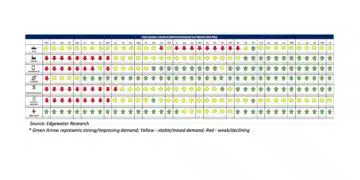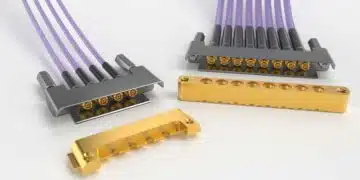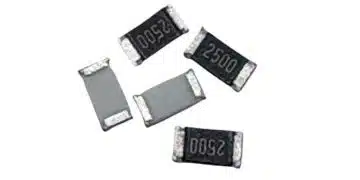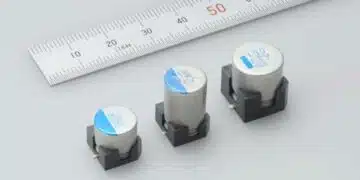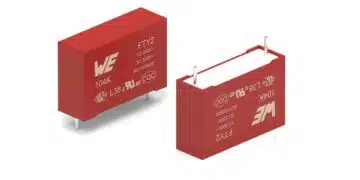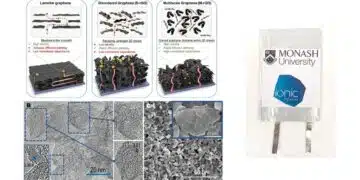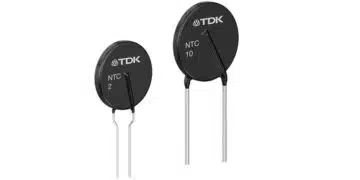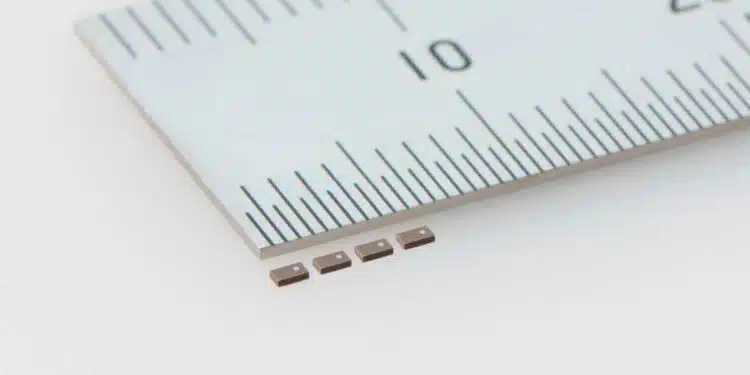TAIYO YUDEN has begun mass production of a SMD metal power inductor MCOIL™ LSCN series of multilayer thin metal power inductors in dimensions 1.0 x 0.5 x 0.33 mm maximum height.
This power inductor is for use as choke coils in the power supply circuits of wearable devices, such as smartphones, AR/VR glasses, TWS devices, and smart watches.
The “LSCND1005CCTR47MH” is 40% lower in height than our previous product, the “LSCNB1005EETR47MB” (1.0 x 0.5 x 0.55 mm), and realizes a metal power inductor as thin as 0.33 mm. This will contribute to the miniaturization and thickness reduction of cutting-edge electronic devices.
Mass production of this products began at our subsidiary, WAKAYAMA TAIYO YUDEN CO., LTD. (Inami-cho, Hidaka-gun, Wakayama Prefecture), in December 2024. Samples are available for 50 yen per unit.
Technology Background
As smartphones, AR/VR glasses, and wearable devices are equipped with higher-performance processors, more sensors, multiple cameras, and higher-capacity batteries for sophistication, electronic components used in them need to be smaller and thinner.
In particular, smartphones are requiring thinner electronic components, due to the trend towards foldable devices that combine large screens and smaller sizes, as well as the adoption of multi-layered circuit boards. On the other hand, wearable devices, such as AR/VR glasses, TWS devices, and smart watches, require smaller, lighter, and thinner components to achieve a thin profile and comfortable fit.
To address these needs, TAIYO YUDEN has been expanding its lineup in the MCOIL™ LSCN series of multilayer metal power inductors which use metallic magnetic core materials with high DC saturation characteristics, and provide superior characteristics for achieving miniaturization and thinness. With our latest upgrade, we have commercialized the “LSCND1005CCTR47MH,” which achieves a thickness of 0.33 mm for a metal power inductor by utilizing the strengths of our multilayer process technology.
In response to market needs, we will continue to expand and improve our product lineup with higher performance and reliability.
■ Application
For use as choke coils for power supply circuits in wearable devices such as smartphones, AR/VR glasses, TWS devices, and smart watches.
■ Characteristics
| Part number | Size (LxW) [mm] | H [mm] max. | Nominal inductance [μH] | Inductance tolerance [%] | Rated current*3 [A] max. | DC resistance [mΩ] max. | |
| Saturation current Idc1*1 | Temperature rise current Idc2*2 | ||||||
| LSCND1005CCTR47MH | 1.0×0.5 | 0.33 | 0.47 | ±20% | 1.4 | 0.8 | 345 |
- *1 The saturation current value (Idc1) is the DC current value having an inductance decrease down to 30%. (at 20℃)
- *2 The temperature rise current value(Idc2) is the DC current value having temperature increase up to 40℃. (at 20℃)
- *3 The rated current value is following either Idc1(max) or Idc2(max), which is the lower one.


